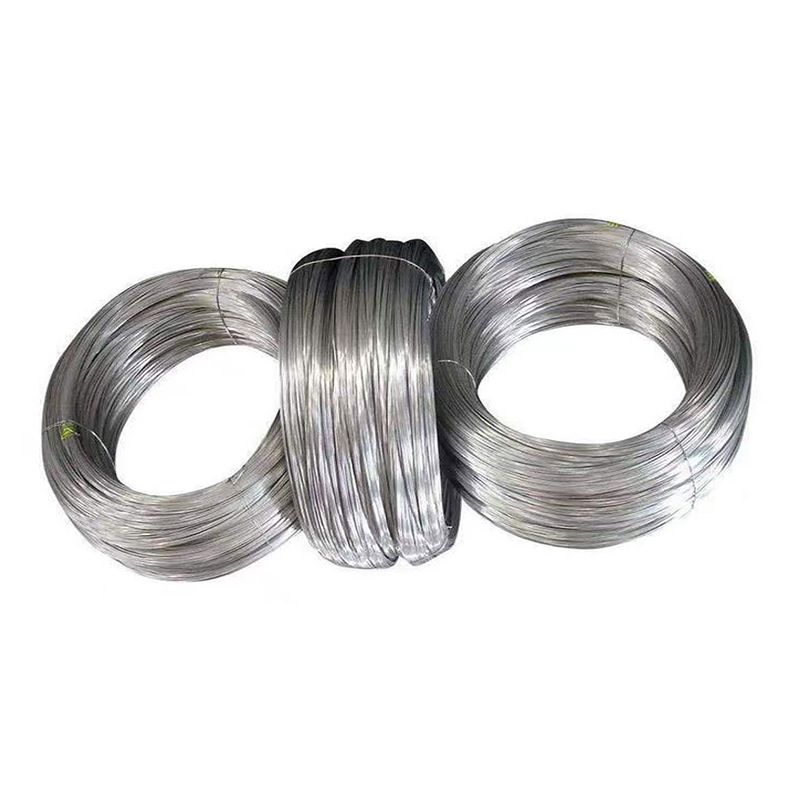Industry News
How do temperature extremes affect the performance of steel fasteners?
Brittle Fracture Risk: At temperatures below the ductile-to-brittle transition temperature (DBTT), steel fasteners become highly susceptible to brittle fracture...

Mild steel is carbon steel with a carbon content o...

Medium carbon steel is carbon steel with a carbon ...

Alloy steel In addition to iron and carbon, other ...

Bearing steel, also known as high carbon chromium ...

Fasteners must be manufactured from raw materials,...

Special-shaped steel refers to steel whose shape i...

Heat Transfer Efficiency: Thermal conductivity is a measure of how well a material can conduct heat. Low-carbon steel, with its moderate thermal conductivity relative to metals like copper or aluminum, plays a crucial role in facilitating efficient heat transfer in various industrial applications. In processes such as heat exchangers or thermal management systems, where rapid and effective heat exchange between fluids or components is essential, the thermal conductivity of low-carbon steel ensures that heat can be transferred quickly and efficiently. This capability is particularly valuable in optimizing energy consumption and operational costs by reducing the time and energy required to achieve desired temperature changes.
Temperature Uniformity: Higher thermal conductivity in low-carbon steel promotes uniform temperature distribution across its surface and within components. This uniformity is critical in applications where consistent temperatures are required to maintain product quality, ensure process stability, or prevent thermal stress in materials. For example, in molding processes for plastics or metals, uniform heating provided by low-carbon steel helps achieve consistent material properties and dimensional accuracy. Similarly, in industrial furnaces or heat treatment operations, uniform temperature distribution minimizes thermal gradients that can cause warping or uneven mechanical properties in treated materials.
Energy Efficiency: The thermal conductivity of low-carbon steel directly impacts the energy efficiency of heat transfer systems. Efficient heat transfer reduces energy consumption by minimizing heat loss during transmission or enhancing heat dissipation from components. This property is crucial in applications such as HVAC systems, where efficient heat exchange contributes to lower operating costs and reduced environmental impact. By selecting low-carbon steel with appropriate thermal conductivity, engineers can design systems that maximize energy efficiency without compromising performance or reliability.
Material Selection: Engineers choose low-carbon steel based on its thermal conductivity to optimize performance in specific heat transfer applications. For instance, in heat sinks or heat exchangers, where the efficient dissipation or exchange of heat is critical to maintaining component temperature within safe operating limits, the thermal conductivity of low-carbon steel ensures effective thermal management. This consideration extends to industries such as automotive, aerospace, and electronics, where precise temperature control is essential for enhancing product performance, longevity, and reliability.
Insulation Needs: The thermal conductivity of low-carbon steel influences the design and selection of insulation materials in heat transfer applications. While low thermal conductivity minimizes heat loss or gain through structural components, applications requiring precise thermal insulation may necessitate additional insulation layers or materials with lower thermal conductivity. For instance, in cryogenic storage systems or high-temperature processing environments, where maintaining specific temperature ranges is critical, engineers may integrate low-carbon steel with advanced insulation materials to optimize thermal performance and operational efficiency.


We are a source manufacturer of professional steel wire, we also have our own international trade department, we produce and sell by ourselves.
Ningbo SunRise Refined Metal Wire Material Co., Ltd. is China Custom How does the thermal conductivity of low-carbon steel impact its performance in heat transfer applications? Suppliers and How does the thermal conductivity of low-carbon steel impact its performance in heat transfer applications? Factory. We not only brought in 10 sets of spheroidizing annealing furnaces, dozens of metal wiredrawing equipments and twoworld's leading automatic phosphating pickling lines, but also engaged senior engineers as consultants fromTaiwan. The raw material that we use are supplied by the well known suppliers such as Bao Steel Co., Ltd and Xingtai lron & Steel Corp., Ltd. Also, the domestic lron & Steel manufacturers can be nominated by our customers.
We mainly produce steel wire made of alloy steel, bearing steel, free-cutting steel, high-quality carbon structural steel, low-alloy high-strength structural steel and other materials as raw materials. The annual output is 360,000 tons. It is one of the largest finished wire production bases in Ningbo. We serve all kinds of fasteners, special-shaped parts, automotive fasteners, wind power, petroleum and other fields. Ningbo SunRise is able to meet the high quality requirements of our customers throughout the whole operation process from raw materials to finished products.
Brittle Fracture Risk: At temperatures below the ductile-to-brittle transition temperature (DBTT), steel fasteners become highly susceptible to brittle fracture...
Corrosion Risk: Despite the enhanced corrosion resistance imparted by the phosphate coating, the steel can still be susceptible to corrosion under certain condi...
Directionality of Brushed Lines: Brushed process steel is characterized by fine, linear abrasions that create a distinctive surface texture. Under directional l...
High Hardness: Bearing steels are engineered to achieve specific hardness levels necessary for withstanding heavy loads and maintaining dimensional stability. T...
Contact Us
Your email address will not be published. Required fiels are marked